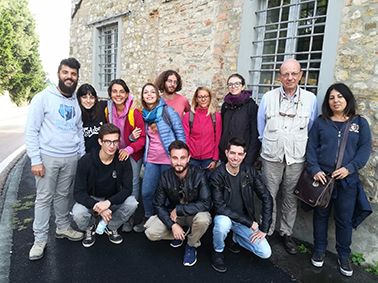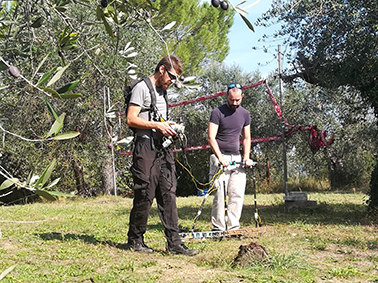Articolo disponibile anche in: Italian
After more than 40 years the investigation of the mythical city of Semifonte – the city founded by the Alberti counts and destroyed by the Florentines in 1202 – is still open.
The only building still visible today is the Chapel of San Michele Arcangelo in Semifonte, that from 1570 has dominated the hills between the Chianti and Valdelsa.
The chapel was designed by the architect Santi di Tito and built once the veto issued by the Florentines had expired. The design was a reproduction, in scale 1:8, of the Dome of Santa Maria del Fiore, Brunelleschi’s masterpiece.
Thanks to a network of partners, the Cnr of Rome in close cooperation with Italian and Polish universities, investigations and archaeological inspections are underway. The aim is to identify possible agglomerations and structures submerged in the subsoil.
This is an international operation, the result of the Protocollo di Intesa (Memorandum of Understanding) signed in 2016 between the Municipality of Certaldo and the Unione comunale del Chianti fiorentino, as part of a project that aims to promote the Semifonte site, in collaboration with the Achu Archaeological Group and some local private citizens.
“A massive venture – the Mayor of Barberino Val d’Elsa Giacomo Trentanovi defines it – that stimulates interesting collaborations and international relations. The study is conducted by Italian and Polish archaeologists of the Universities of Florence and Warsaw, engaged in the discovery of two cities that had been erased from history but not from memory: the towns of Semifonte in the Valdelsa and Sandomierz in Poland”.
An innovative aspect of the investigations is the combination of archeology and new high-tech technology, as well as the use of sophisticated methodologies and instruments such as the ground-penetrating radar, the magnetometer, the electrical resistivity, the drone that captures multispectral and photo thermal images.
It’s the non-invasive archeology that allows the hunt for what remains of Semifonte. The surveys have also seen the participation of the students of Medieval Archeology and the Scuola di Specializzazione in Beni Archeologici of the University of Florence.
Despite the wrath of the Florentines, who centuries ago prohibited any building work in Semifonte continues to exist in the public imagination. All thanks to the passion of the people who live in the area.
Dante mentioned Semifonte in the sixteenth canto of his “Paradise”, and Pace da Certaldo, author of the ‘Istoria della guerra di Semifonte” (probably written between 1320 and 1332), describes it extensively.
A thread that has never been broken thanks above all to local people, the ones who used to inhabit this area in the past and the citizens of today, who still have a sense of belonging. This community has strong links to the land and has kept the submerged city alive over time.






